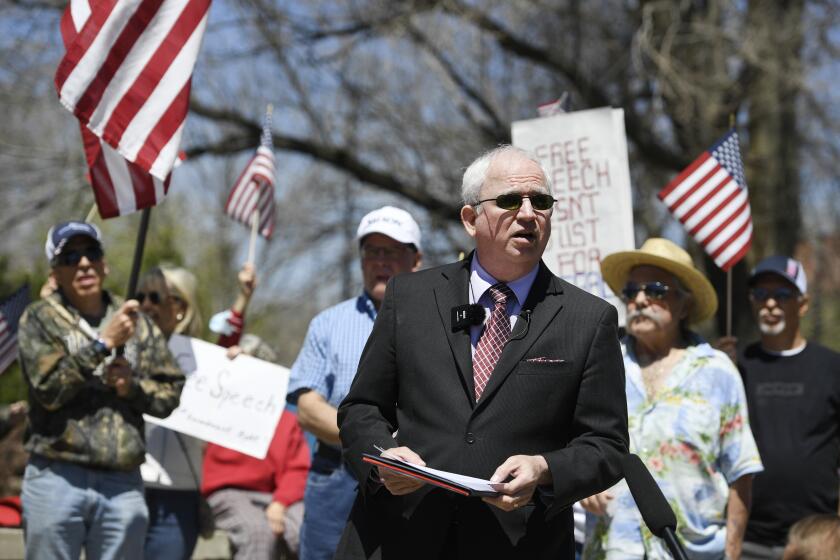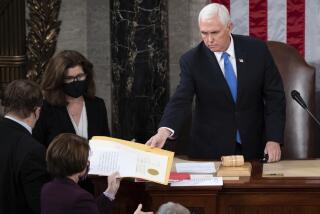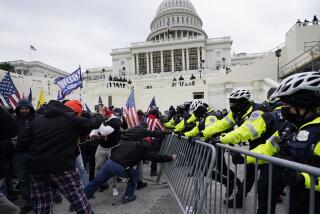‘They probably would have killed him’: Jan. 6 hearing to show Trump put Pence in danger
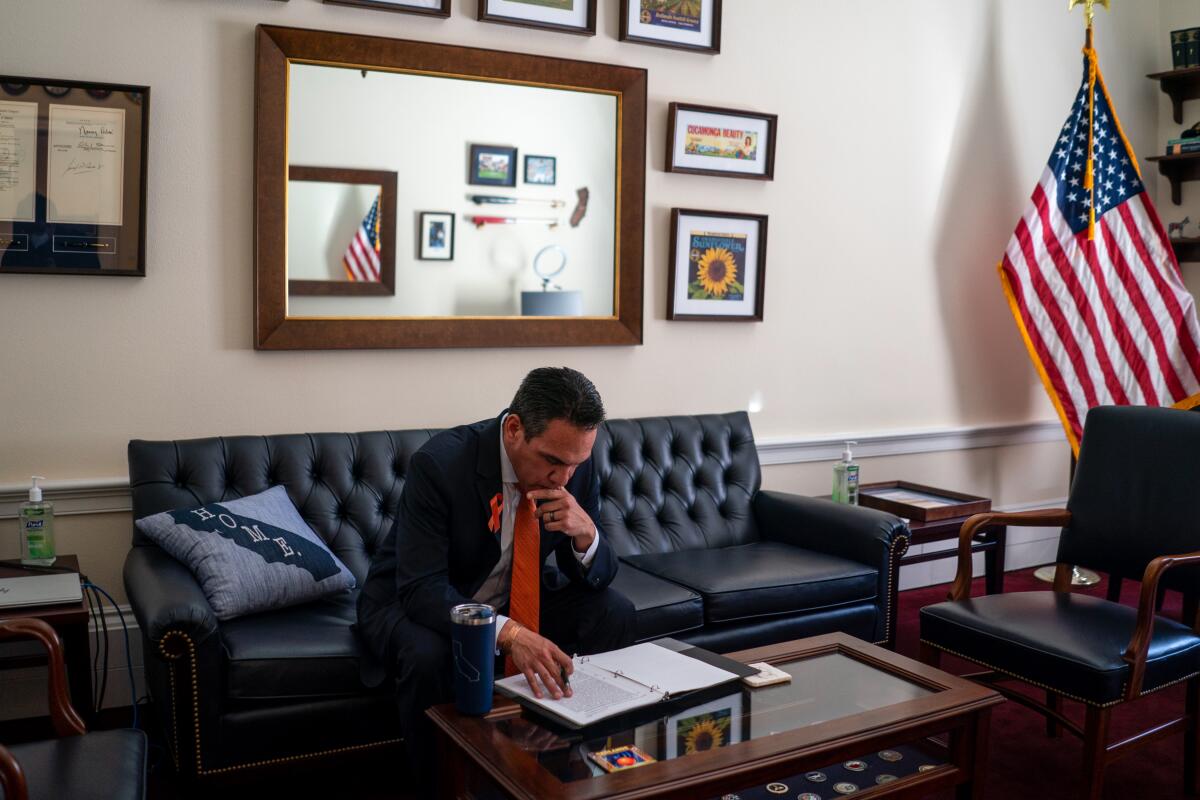
- Share via
WASHINGTON — When the House committee investigating Jan. 6, 2021, meets Thursday, the highest-ranking member of House leadership serving on the panel will be in an unusual position: praising a leader of the opposing party.
The hearing will focus on the intense pressure then-President Trump and conservative lawyer John Eastman put on then-Vice President Mike Pence to either reject certain states’ electoral college votes or delay Congress from certifying the results of the 2020 presidential election.
“Mike Pence did his job,” House Democratic Caucus Vice Chairman Pete Aguilar (D-Redlands) told The Times. “He did his job throughout. He didn’t waver in his reading of the Constitution. Even after all of that, the president of the United States still used every method to call him names, to call him out, and to summon a mob to get him.”
With the help of committee Chair Bennie Thompson (D-Miss.) and Vice Chair Liz Cheney (R-Wyo.), the four-term California congressman will take the lead in laying out the panel’s case Thursday, arguing that it would have been disastrous for the country if Pence hadn’t adhered to the vice president’s largely ceremonial role in counting the votes, and had instead embraced Trump’s theory that he could be an arbiter of whether states’ votes were acceptable.
“If the vice president would have succumbed to pressure, or if the vice president would say that he or she was more loyal to the president than the Constitution, we would have had a constitutional crisis that would have threatened the republic,” Aguilar said.
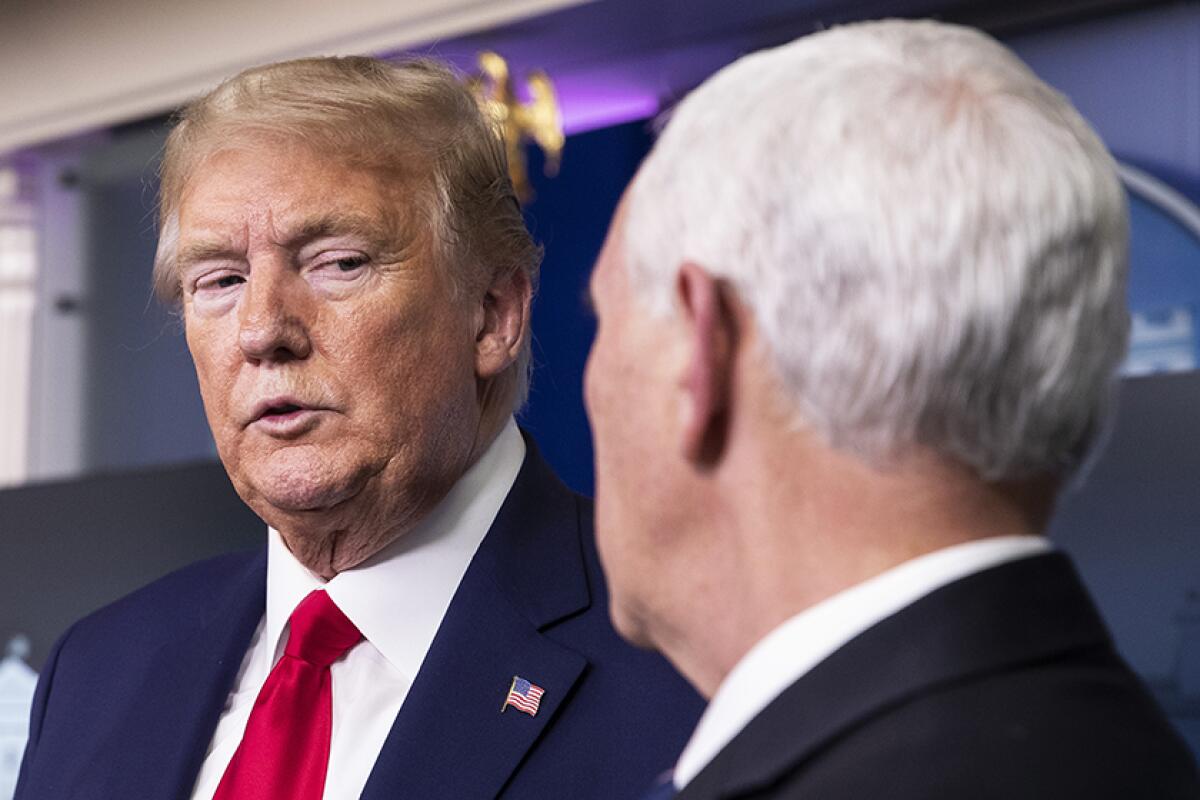
Aguilar said he sees the value of having someone in a political leadership position make the argument.
“It’s important as a partisan to say that the vice president did his job,” he said.
The committee’s mandate from the House includes proposing potential legislation, such as more clearly defining or limiting the vice president’s role, he said, “but this story is also that some people did the right thing in the moment of time that we needed them.”
Depositions already released by the committee show that Trump tried to persuade Pence to intervene in the presidential election in private Oval Office meetings on Jan. 4 and Jan. 5 and in a call the morning of Jan. 6. The pressure campaign continued in public, with Trump lambasting Pence in his Jan. 6 speech ahead of the attack on the Capitol and tweeting to supporters during the riot that Pence “didn’t have the courage to do what should have been done.”
“What the former president was willing to sacrifice — potentially the vice president — in order to stay in power is pretty jarring,” Aguilar said.
He said the committee had overlaid the route along which Pence was evacuated with a second-by-second timeline of where the rioters were in the building.
“How many paces they were apart is very small,” Aguilar said.
Most alarming to him, he said, is a clip the panel will show Thursday from a rioter who is cooperating with the Justice Department.
“We’ll hear from a witness who says that, if they would have found [Pence], they probably would have killed him,” Aguilar said.
Greg Jacob, who as Pence’s chief counsel was present as Eastman and Trump pushed the vice president to intervene, is among the witnesses scheduled to testify Thursday. Jacob was also with Pence inside the Capitol on Jan. 6, arguing with Eastman by email during the riot over who was to blame for the violence.
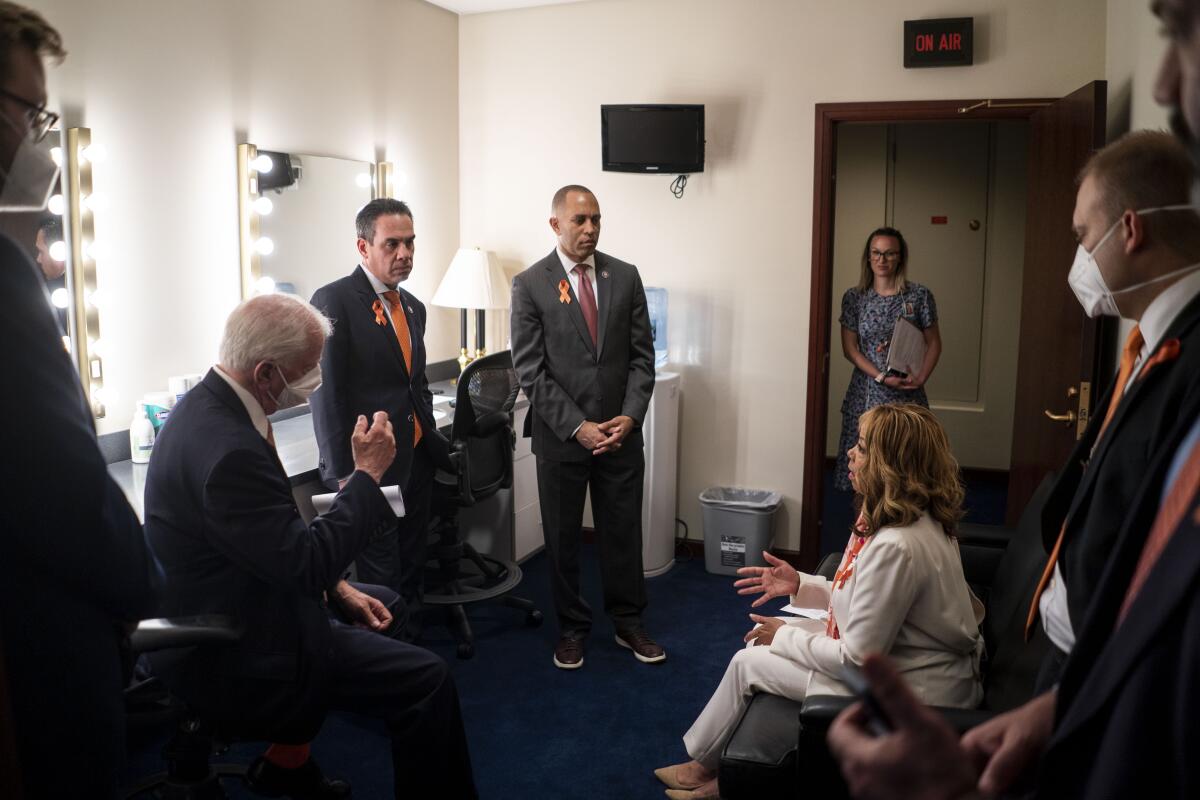
“The ‘siege’ is because YOU and your boss did not do what was necessary to allow this to be aired in a public way so that the American people can see for themselves what happened,” Eastman said in an email to Jacob.
After the riot ended, Eastman again emailed Jacob to say that the vice president still should send the election back to the states rather than certifying it, based on what he called a “relatively minor violation” of the procedural law.
Former Trump attorney John Eastman is at the center of the House’s Jan. 6 investigation
Aguilar said the committee also expects to use clips from the deposition of former Pence Chief of Staff Marc Short, who was also in the Eastman meetings, as well as depositions of people within the White House who discussed which members of Congress were involved in Trump’s efforts.
“You’ll also hear other people who worked inside the White House who can speak to the evolution of this conspiracy theory idea that Professor Eastman ended up advocating,” Aguilar said.
Eastman, a former Chapman University professor, was the architect of the theory that Pence could either reject states’ electoral college votes due to allegations of fraud, an act that would have left deciding the next president up to state delegations in the House, or send results back to the states to have their legislatures examine the results and decide whether they should be changed.
“What’s important to know is this only became a real strategy after they lose 60-plus court cases,” Aguilar said. “This became the last-ditch effort.”
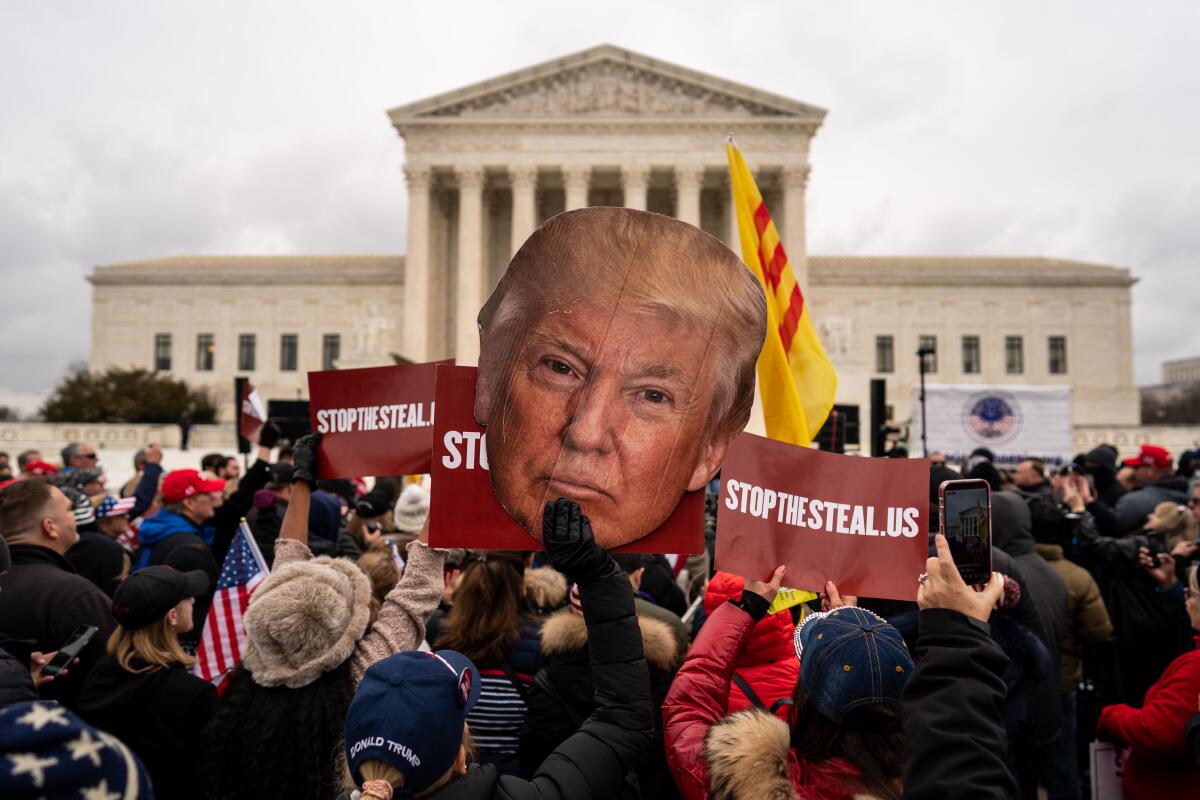
Aguilar said the “politically palatable” plan was to send results back to the states, but “ultimately, what they wanted to do was to have the vice president outright reject electors, depriving the president-elect of the 270 electors that would be needed, thus triggering the states or Congress voting by state.”
The House picks the president if no presidential candidate receives the required 270 votes in the electoral college, with each state getting a single vote. At the time, Republicans controlled a majority of state delegations even though Democrats controlled the House.
“President [Trump] woke up on Jan. 6 feeling that he still had a path to be president by the end of the day and past Jan. 20,” Aguilar said.
The committee has been in a legal fight with Eastman for months over whether his former employer, Chapman University, can turn over to the committee the contents of his university email account. Eastman claimed attorney-client privilege over some of the documents, prompting a judge to review the contested emails.
In his initial order requiring Eastman to hand over emails sent between Jan. 3 and Jan. 7, 2021, Judge David O. Carter found that the emails showed that the plan they were trying to get Pence to implement was obviously illegal and that Trump and Eastman “more likely than not” conspired to obstruct Congress on Jan. 6.
Carter reviewed hundreds more emails sent or received by Eastman in the months before Jan. 6, and recently ordered him to hand over an additional 159 challenged documents by this week, including some from Trump.
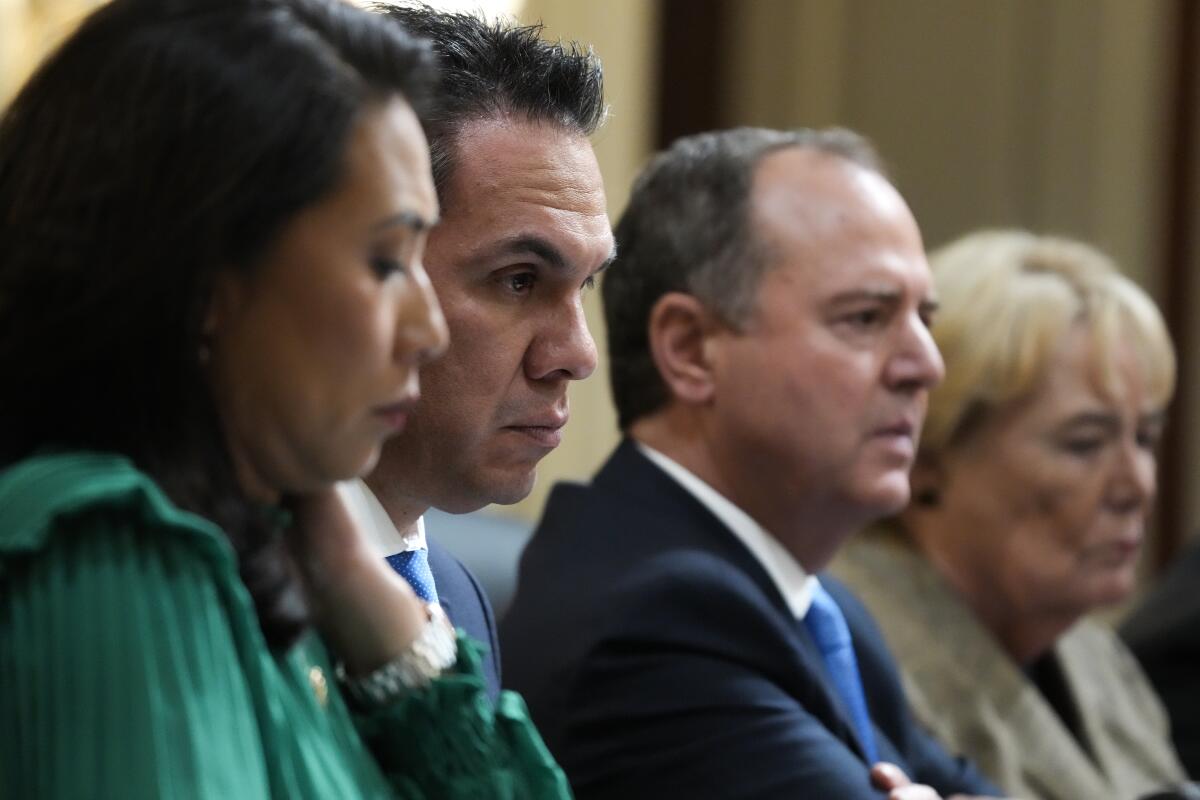
Aguilar said in an interview that the committee is preparing for the contingency that the new trove of emails will be useful to Thursday’s hearing.
“If they’re relevant to our hearing, we will include them. We will have time to triage and read and analyze,” he said. “We will adapt.”
The panel also plans to hear in-person testimony from federal Judge J. Michael Luttig, who was nominated to the bench by President George H.W. Bush. Pence relied on Luttig’s stance disputing Eastman’s assertions about the vice president’s power when he announced on Jan. 6 that he did not believe he had the power to reject votes or delay the count.
Eastman once clerked for Luttig.
Aguilar said Luttig would be able to speak to the widely accepted interpretation of the role of Congress and the vice president under the Electoral Count Act of 1877 and the 12th Amendment, and on the deficiencies in the law that Congress might need to address.
After Thursday’s hearing, the committee plans just two more, on June 21 and June 23, with each led by a different committee member.
Like most of the committee members, Aguilar was on the House floor Jan. 6. He believes he was prepared to turn to investigating what happened in a way that others perhaps weren’t because of his experience in the aftermath of the 2015 San Bernardino shooting, which occurred in his district less than a year into his first term.
“I think it prepared me in a sense to be able to have these conversations and to be able to kind of step up in this moment, to try to help and shine a light on something that needs to be discussed,” he said. “They’re very different experiences. But Jan. 6 is informed by what my community went through, what I went through with them as their friend and spokesperson, with the Dec. 2 shooting in San Bernardino.”
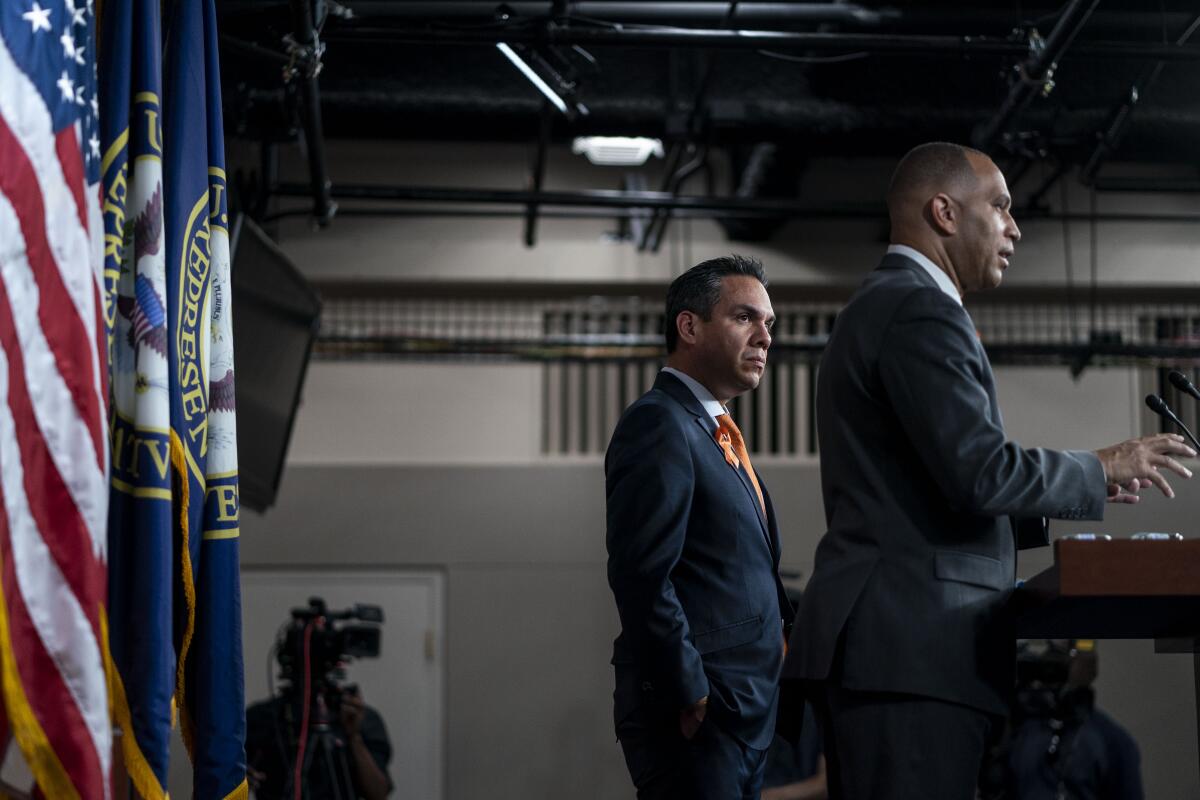
More to Read
Get the L.A. Times Politics newsletter
Deeply reported insights into legislation, politics and policy from Sacramento, Washington and beyond. In your inbox three times per week.
You may occasionally receive promotional content from the Los Angeles Times.

